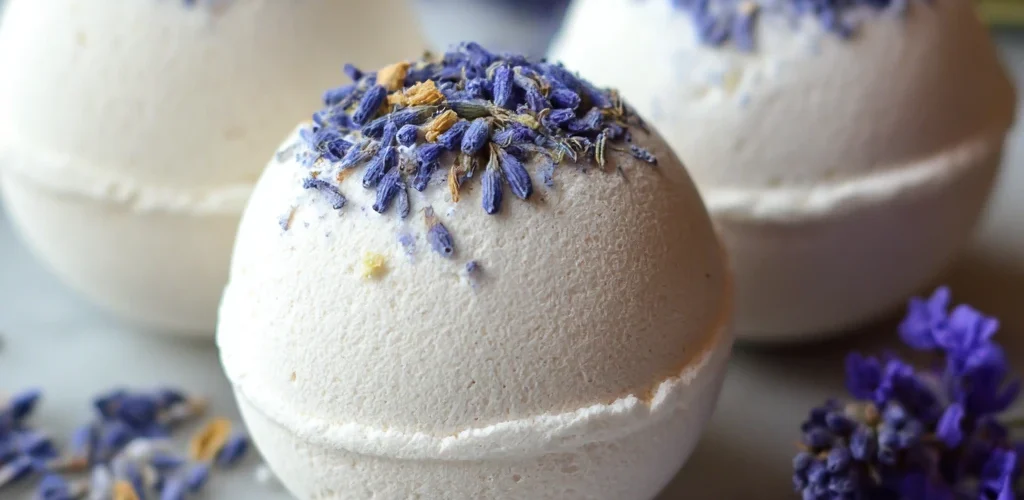Easy Home Updates That Make Life Feel Calmer
In today’s fast-paced world, creating a calming and relaxing home environment is more important than ever. It’s your sanctuary, a place to unwind and recharge. Fortunately, you don’t need a complete renovation to achieve this. Simple, affordable updates can transform your space and significantly reduce stress. This article explores ten easy home updates that will make your life feel calmer, creating a haven of tranquility in your own home.

1. Declutter and Organize: The Foundation of Calm
Clutter is a major contributor to stress and anxiety. A messy environment can overload your senses and make it difficult to focus. Before making any physical changes, prioritize decluttering and organizing each room.
The KonMari Method: Sparking Joy
Consider using the KonMari Method, developed by Marie Kondo. This involves going through your belongings category by category (clothes, books, papers, miscellaneous items, and sentimental items) and asking yourself if each item “sparks joy.” If it doesn’t, thank it for its service and let it go.
Practical Storage Solutions
Once you’ve decluttered, invest in practical storage solutions. Baskets, bins, shelves, and organizers can help you keep things tidy and easily accessible. Utilize vertical space with wall-mounted shelves or floating shelves to maximize storage without taking up valuable floor space. Clear storage containers are especially useful as they allow you to easily see what’s inside.
Establish Daily Habits
Maintaining a clutter-free home requires consistent effort. Establish daily habits like making your bed, putting things away immediately after use, and spending a few minutes each day tidying up. These small actions will prevent clutter from accumulating and keep your home feeling calm and organized.
2. Embrace Natural Light: A Mood Booster
Natural light has a profound impact on our mood and well-being. Maximize the amount of natural light in your home by making a few simple changes.
Window Treatments: Let the Light In
Replace heavy curtains with lighter, sheer fabrics that allow sunlight to filter through. Blinds or shades can provide privacy while still allowing ample light to enter. Consider removing curtains altogether in areas where privacy isn’t a concern.
Mirrors: Reflecting Light and Space
Strategically placed mirrors can amplify natural light and make a room feel brighter and more spacious. Place mirrors opposite windows to reflect the sunlight and brighten up dark corners. A large mirror can also create the illusion of more space in a small room.
Clean Your Windows: A Simple Solution
Dirty windows can significantly reduce the amount of natural light entering your home. Regularly cleaning your windows, both inside and out, can make a surprising difference in the brightness of your space.
3. Soothing Colors: Creating a Tranquil Atmosphere
Color plays a vital role in our emotional state. Choosing the right colors for your home can create a calming and relaxing atmosphere.
Calming Color Palettes
Opt for soft, muted colors like blues, greens, grays, and pastels. These colors are known for their calming and soothing properties. Avoid bright, vibrant colors, which can be stimulating and overwhelming.
Accent Colors
Use accent colors sparingly to add pops of interest without disrupting the overall calming effect. Earthy tones like browns, beiges, and greens can create a sense of warmth and connection to nature.
Test Before You Commit
Before painting an entire room, test out different colors by painting small swatches on the wall. Observe how the colors look in different lighting conditions throughout the day.
4. Bring Nature Indoors: Connecting with the Outdoors
Connecting with nature has been shown to reduce stress and improve overall well-being. Bringing nature indoors can create a calming and restorative environment.
Houseplants: A Breath of Fresh Air
Houseplants not only add beauty to your home but also purify the air and create a sense of tranquility. Choose plants that are easy to care for, such as snake plants, spider plants, and peace lilies.
Natural Textures
Incorporate natural textures into your decor, such as wood, stone, and cotton. These materials create a sense of warmth and connection to nature. Consider adding a wooden coffee table, a stone vase, or cotton throws.
Nature-Inspired Art
Hang artwork that depicts natural landscapes, such as forests, beaches, or mountains. These images can evoke feelings of peace and tranquility.
5. Create a Sensory Sanctuary: Engaging the Senses
Engaging your senses in a positive way can significantly reduce stress and promote relaxation. Create a sensory sanctuary in your home by incorporating elements that appeal to each of your senses.
Aromatherapy: The Power of Scent
Use aromatherapy to create a calming and inviting atmosphere. Diffuse essential oils such as lavender, chamomile, or sandalwood, which are known for their relaxing properties.
Soft Lighting: Setting the Mood
Avoid harsh overhead lighting, which can be jarring and stressful. Instead, opt for soft, warm lighting, such as table lamps, floor lamps, and string lights. Dimmable lights allow you to adjust the brightness to create the perfect mood.
Soundscapes: The Sound of Silence (or Nature)
Minimize noise pollution by soundproofing your home as much as possible. Use thick curtains, rugs, and upholstery to absorb sound. Alternatively, create a calming soundscape by playing relaxing music or nature sounds. White noise machines can also help to block out distracting noises.
6. Comfortable Furniture: Your Relaxation Zone
Uncomfortable furniture can contribute to physical tension and discomfort, hindering relaxation. Invest in comfortable furniture that supports your body and promotes relaxation.
Supportive Seating
Choose sofas, chairs, and armchairs that provide adequate support for your back and neck. Consider ergonomic designs that promote good posture.
Soft Textiles
Add soft textiles to your furniture, such as plush blankets, cozy throws, and comfortable cushions. These materials can make your seating areas more inviting and relaxing.
Create a Reading Nook
Designate a specific area in your home as a reading nook. This could be a cozy corner with a comfortable chair, a warm blanket, and a good book.
7. Minimize Technology: Disconnecting to Reconnect
Constant exposure to technology can be overwhelming and stressful. Minimize your use of technology in your home to create a more peaceful environment.
Designated Tech-Free Zones
Establish designated tech-free zones in your home, such as the bedroom or dining room. Avoid using electronic devices in these areas to promote relaxation and connection.
Digital Detox
Schedule regular digital detox periods, during which you completely disconnect from technology. Use this time to engage in activities that promote relaxation, such as reading, spending time in nature, or practicing mindfulness.
Organize Cables
Tangled cables can be unsightly and contribute to a sense of clutter. Organize your cables using cable ties, clips, or organizers to keep them neat and tidy.
8. Personalize Your Space: Creating a Home That Reflects You
Your home should be a reflection of your personality and values. Personalizing your space can make you feel more comfortable, relaxed, and at home.
Display Meaningful Objects
Display objects that have personal significance to you, such as family photos, travel souvenirs, or handmade items. These objects can evoke positive memories and emotions.
Create a Gallery Wall
Create a gallery wall with artwork that you love. This can be a collection of paintings, prints, photographs, or other decorative items.
Add Personal Touches
Add personal touches to your decor, such as a favorite quote, a meaningful piece of jewelry, or a collection of books that you enjoy.
9. Mindful Activities: Cultivating Calm Within
Your home environment can support your mindfulness practice. Designate a specific area for mindful activities, such as meditation, yoga, or journaling.
Meditation Corner
Create a meditation corner in your home with a comfortable cushion, a soft blanket, and a few calming objects, such as candles or crystals.
Yoga Space
Dedicate a space for practicing yoga or other forms of exercise. Make sure the area is well-ventilated and free of clutter.
Journaling Area
Create a journaling area with a comfortable chair, a notebook, and a pen. Use this space to reflect on your thoughts and feelings.
10. Consistent Maintenance: A Well-Maintained Home is a Calm Home
Regular maintenance is crucial for maintaining a calm and comfortable home environment. Address small problems before they become big problems.
Fix Leaks and Repairs
Promptly fix any leaks or repairs in your home. Leaks can lead to water damage and mold growth, which can be stressful and unhealthy.
Regular Cleaning
Establish a regular cleaning schedule to keep your home clean and tidy. A clean home is a calm home.
Declutter Regularly
Continue to declutter your home on a regular basis to prevent clutter from accumulating. This will help you maintain a sense of order and control.

FAQ: Easy Home Updates for a Calmer Life
Q: How can I make my bedroom more relaxing?
A: Focus on creating a calming color palette, investing in comfortable bedding, minimizing technology, and incorporating elements that appeal to your senses, such as aromatherapy and soft lighting.
Q: What are some easy ways to reduce noise in my home?
A: Use thick curtains, rugs, and upholstery to absorb sound. Seal gaps around doors and windows. Consider using a white noise machine or playing relaxing music to mask distracting noises.
Q: What are the best plants for a calming home environment?
A: Snake plants, spider plants, peace lilies, lavender, and rosemary are all excellent choices for creating a calming home environment.
Q: How can I declutter my home when I feel overwhelmed?
A: Start small by focusing on one area or category at a time. Break down the task into smaller, more manageable steps. Don’t be afraid to ask for help from friends, family, or professional organizers.
Q: What are some budget-friendly ways to create a calming home environment?
A: Decluttering, rearranging furniture, incorporating natural light, adding houseplants, and using aromatherapy are all budget-friendly ways to create a calming home environment.



